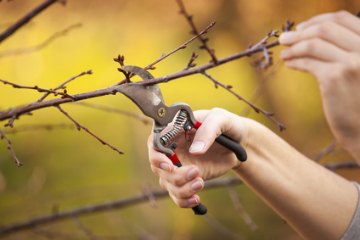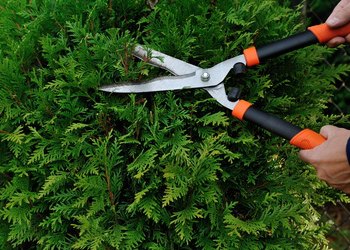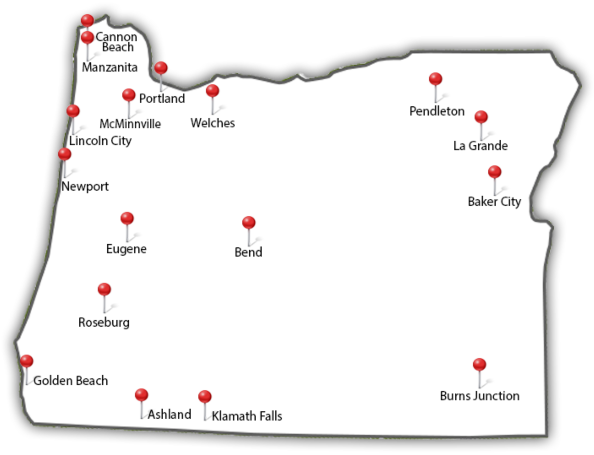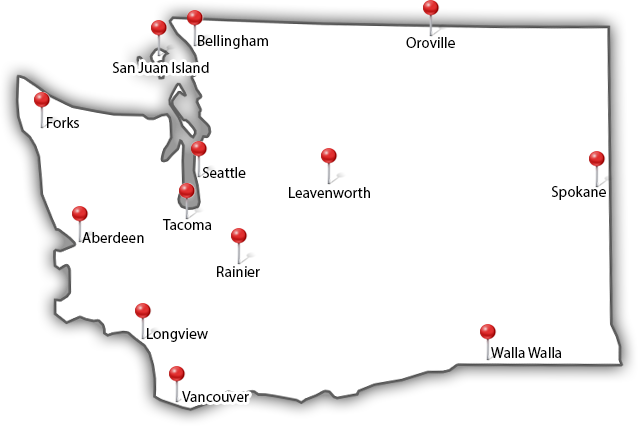When Is the Best Time to Prune Shrubs and Trees?
Published
Tree pruning is healthy. Think of it as a haircut — you’re not hurting the plant, just keeping things in the best shape and paving the way for future growth. But you don’t want to disfigure your shrubs. Misguided hacks can prevent your tree from blossoming that year. Consider this your quick guide to the best time of year for tree pruning and shrub trimming.

First, an important note: Dead branches, those in the way of pedestrians, and those that could damage your property can be removed anytime. Don’t wait with a dangerous situation. If you have a tree emergency, you can call us 24 hours a day at 503-538-8733.
When to Prune Trees: Winter
Overall, the best time to prune your trees is when they’re dormant, so late winter to early spring is ideal. (In fact, that’s the only time to prune birch trees and American elms.) For shade trees like ash and oak, winter is the perfect time. Deciduous fruit trees like apples, cherries, and pears should also be pruned in midwinter.
Oregon State University horticulturist Ross Penhallegon agrees. “November through March is a good time to prune,” he says. “If you are worried about winter freeze damage, wait until after Feb. 1, which is the best time to prune in western Oregon, and March 15 east of the Cascade Mountains.” Not only is it less traumatizing to the tree, but it’s easier to see the tree’s structure without all of its leaves. Fall isn’t too early to contact your arborist and set up an appointment for the months ahead.
When Not to Prune
Don’t wait too late! In general, you want to avoid pruning trees during late spring and early summer. That’s when everything is starting to bloom. Trees don’t have enough of a chance to heal before the growing season if you prune them too late. The burst of energy plants get in the spring will help heal small cuts made in the previous months. 
If a tree already has leaves, don’t attack them too much — that’s where photosynthesis is happening and where the tree is getting its food. Not enough leaves mean not enough energy sources. Think of leaves as little, flat green batteries that keep the tree running.
Fall is also usually not the best time to prune. Cuts seem to heal more slowly during the fall, and pests or fungi can easily prey on plants. As Oregon State University says, “Pruning during the spring (post-dormancy) and fall (pre-dormancy) is generally the least desirable time as the plant is most vulnerable during those times.” Try to be patient and wait for trees and shrubs to be fully dormant before trimming them.
Although late winter and early spring is generally the best time to trim trees, some have different timelines. Read on for the intricacies of pruning.
When to Prune Flowering Shrubs and Trees
The main determining factor for pruning shrubs is whether they flower on old wood or new wood. Does your shrub blossom in early spring, on old wood from last season? The best time to prune them is right after they bloom.
If your shrub flowers on new wood — it’s a late bloomer, so to speak — the blossoms grow on the current season’s growth instead of last season’s. That means you’re fine to prune these shrubs in late winter to early spring, because you won’t be harming the blossoms yet.
Here’s a handy chart:
| Old Wood | Most Plants & Shrubs | New Wood & Broadleaf Evergreens | |
| Blossom time: | Early spring | Spring | Late spring |
| Best to prune: | After they bloom (early summer) | Winter | Late winter to early spring |
| Examples: | Lilacs | Shrubs grown primarily for their foliage | Lavender |
| Rhododendrons | Deciduous shade trees | Roses (mid-February to early March in the Willamette Valley) | |
| Forsythia | Deciduous fruit trees like apple and pear | Butterfly bush | |
| Wisteria | Blueberry, gooseberry, and currant bushes | Panicle hydrangea | |
| Most hydrangeas | Grapevines | Crape myrtle | |
| Oregon grapeholly | Holly | ||
| Flowering dogwood | Mahonia | ||
| Azalea | Some magnolias |
When To Remove Suckers and Sprouts
Suckers and water sprouts are unproductive offshoots that steal nutrients from the main stem or trunk. They aren’t harmful, but they can be annoying. This is one of the rare times when you shouldn’t take to the pruning shears in the winter, during the dormant season, because that will make water sprouts and suckers come back with a vengeance the next spring. Instead, clip suckers and sprouts in the early summer months of May and June.
Check out this 30-second video about pruning suckers and sprouts:
Is My Tree Bleeding?
When you prune certain trees like maples, birches, and walnuts, they’ll ooze sap. This potentially disturbing sight is trees’ version of bleeding — except they aren’t hurt. In fact, this is completely normal. Once leaves start to grow, the sap will stop flowing.
Why Hire a Certified Arborist for Tree Trimming?
After reading all this, you might feel ready to head out back with your shears and do some trimming. Whoa there, Nelly! I admire your enthusiasm. Unless you’re experienced and quite knowledgeable about trimming and pruning, it’s best to hire an ISA-Certified Arborist® like us at Northwest Arbor-Culture, because we know how to trim your tree or shrub without topping or making dangerous cuts that leave your plant vulnerable to infection.
It’s already September, so it’s never too early to set up an appointment for tree trimming this winter! Call us today at 503.538.8733 or fill out our online form for a free quote.
You might also want to check out our other blog posts on how to plant a tree, how to mulch your trees, and why your tree is dying.
Sources:
blog comments powered by Disqus










